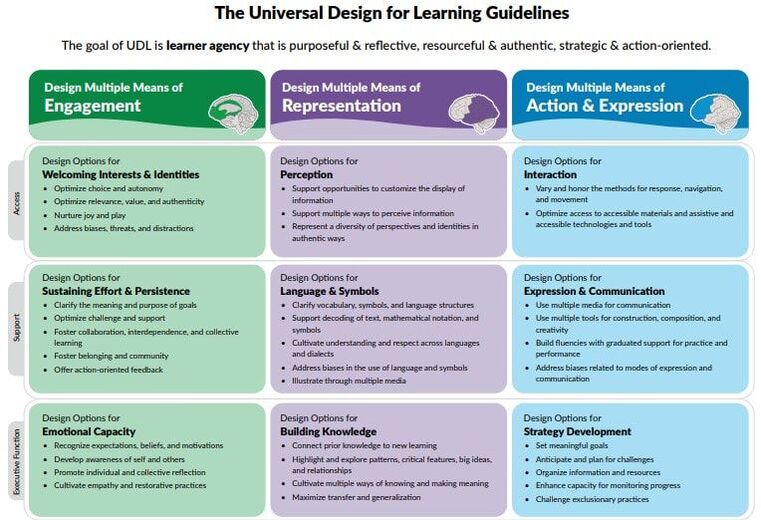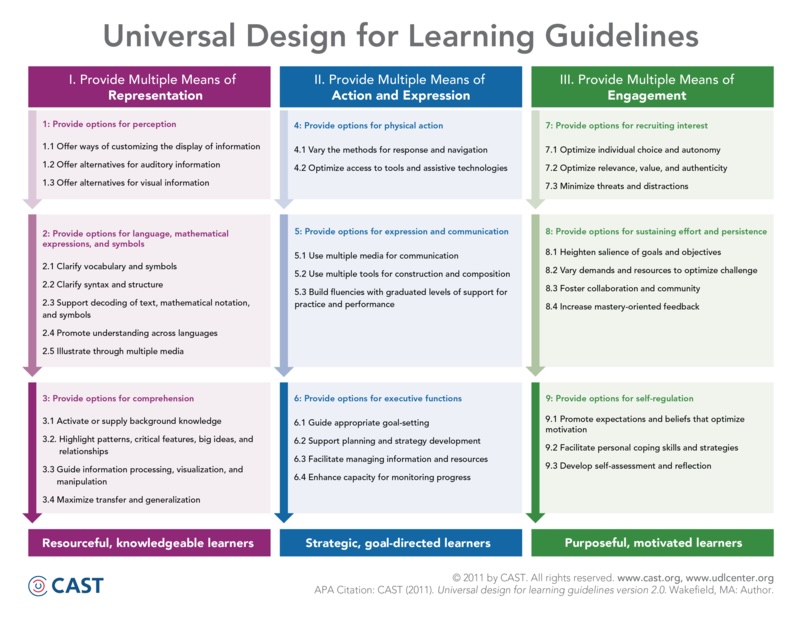UDL: What is it and how has it changed over time?
UDL stands for Universal Design for Learning: UDL is a framework that aims to make learning accessible and beneficial for all students by providing multiple opportunities and routes to complete their learning. UDL helps create inclusive classrooms where all students, including those with disabilities or learning stretches, can succeed. It focuses on removing barriers and ensuring every student has an equal opportunity to thrive.
Why is UDL beneficial and how can you incorporate it into the classroom?
We have learned a lot about UDL throughout this program so far. In Maggie and Julie’s class we did a lot of work around the benefits of UDL and how to incorporate it within your classroom. We also had a lesson on UDL in EDCI 330 which has solidified my understanding of it and has highlighted more important components regarding implementing it into my classroom. UDL is extremely beneficial because it creates an inclusive, flexible, and engaging learning environment that supports all students, regardless of their abilities, backgrounds, or learning styles.
Over the years the guidelines for UDL has changed in a few minor ways.
New and Improved UDL:

Old UDL (2011):

What is new and why is this important?
We discussed in class the many ways the UDL guidelines have changed over the years and listed below are some key takeaways:
- “Design” replaced of “provide” multiple means of …
- They added a photo of the brain and what section targets what part of the brain
- More inclusive language
Teacher Competencies:
- 11) Implement pedagogically context-appropriate sound practices linking assessment for/as/of learning, planning for learning, instructional strategies and approaches to engage all students in relevant and personalized learning
This component directly connects to the UDL guidelines as it highlights the importance of implementing accessible and flexible assessment, learning plans and instructional strategies which is similar to the concept of UDL. By integrating UDL, educators create inclusive, student focused classrooms that connect assessment, planning, and instruction to support all learners effectively.
- 12) Develop an understanding of how learners learn in order to cultivate effective learning environment.
The UVIC competency #12 aligns with Universal Design for Learning by emphasizing inclusivity and flexibility in education! As educators we need to understand how students learn in order to provide the supports needed for their success. This is ultimately what UDL targets as UDL aims to provide students with equal opportunities that are accessible for their learning needs.
One Response
judi61
Kylie,
Although I do not get to see you in action for your practicum, it would be nice to see you in action while practicing some UDL components!I hope that the EKTEP program has prepared you for this journey!
Judi